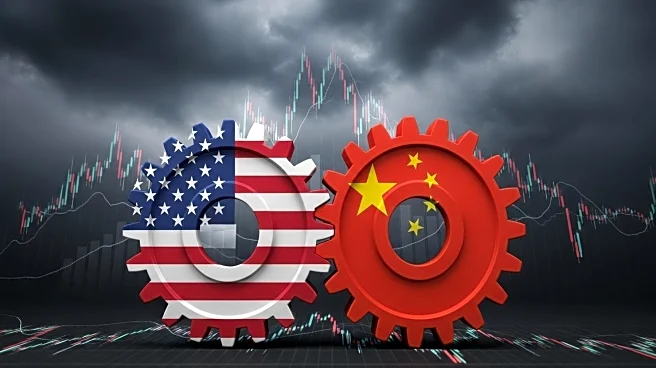What's Happening?
Gold prices have surpassed $4,000 for the first time, reflecting increased demand due to economic uncertainty and trade tensions between the U.S. and China. The rise in gold prices is attributed to heightened price expectations and the desire to hold gold as a safe asset. This increase has led to a higher quantity of gold supplied in the market, as producers respond to the signaling and incentive functions of price. The Financial Times highlights the educational aspect of this development, providing questions for students to explore the economic principles behind the price movements.
Why It's Important?
The surge in gold prices underscores the role of precious metals as a safe haven during periods of economic instability and geopolitical tensions. As investors seek to protect their assets from potential market volatility, the demand for gold increases, influencing supply dynamics and resource allocation in the gold market. This situation provides a practical example for students studying economics, illustrating concepts such as demand, supply, and market equilibrium. The educational focus on this development highlights the importance of understanding economic principles in real-world contexts.
Beyond the Headlines
The increase in gold prices may lead to broader implications for the global economy, as central banks and investors adjust their portfolios in response to changing market conditions. The educational approach taken by the Financial Times emphasizes the need for a deeper understanding of economic mechanisms, encouraging students to analyze the factors driving market changes and their potential long-term effects.











